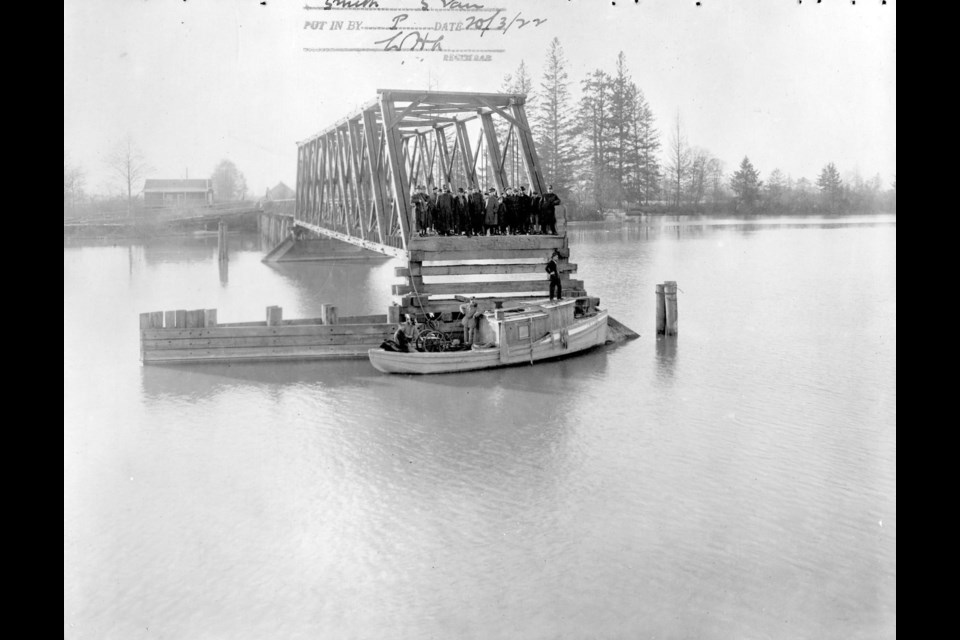Do you remember the old Fraser Street Bridge that linked Richmond to south Vancouver?
If you do, there’s a good chance you’re at the very least about to hit retirement.
The crossing pre-dated the likes of the Knight Street and Oak Street bridges, was laid in 1875 and opened in 1894 and spanned from the northern tip of No. 5 Road in Richmond, across what is now called Mitchell Island, before landing at the southern tip of Fraser Street in Vancouver.
Up until the advent of today’s bridges, it was the main link over the north arm of the Fraser River into Vancouver.
The photos and video shown were posted to a Richmond community Facebook page by Rob Johal, who loves sharing the history of the city and of Vancouver.
The bridge opened as a two-lane wooden span, which was apparently expensive to maintain and was subject to many damages and impairments over the years.
It was finally decommissioned in 1974 when the Knight Street Bridge opened for traffic, the latter of which was originally to be named the “Fraser St. Bridge replacement.”
The Fraser Street Bridge was then subsequently dismantled over the next three years.
But that only tells half the tale of a bridge laden in history with collisions, collapses, ice floes and tragedy.
A silent home video, shot in 1966, shows the bridge after it collapsed after being struck by a barge.
A truck driver and seven children standing on the bridge plunged into the Fraser. Luckily, luckily no one was killed.
The second part of the video shows traffic crossing the bridge using a "Bailey" bridge (which were simple portable bridges used for temporary use during WWII).
According to Johal, this temporary repair was installed within 26 hours of the initial collapse after being floated to the location by a barge. The permanent bridge deck was repaired nine months later.
In its earlier days, just north of the structure's midway point, ramps provided access to “Twigg Island,” which is now the western part of Mitchell Island.
During the 1894 Fraser River flood, the same year the bridge opened, floating debris destroyed more than half the southern section, causing $2,000 damage.
That was an ominous sign for things to come for the crossing, which fared just as badly in 1916, when an ice floe destroyed 160 feet of the bridge.
Just two years later, on a clear moonlit November evening, a jitney (makeshift passenger bus) from the Ladner Ferry was driving at an “excessive speed of 10–15 mph” and failed to observe the red light showing for some time.
Part of the bridge had a swing span and, according to reports, the bus crashed through the gates, travelled a further 20 feet and plunged into the river.
Two men and a little girl were rescued, but nine people died, including the driver.
According to one account, tragedy again struck in 1921, when nine jitney passengers also plunged to their deaths at an open span part of the bridge.



